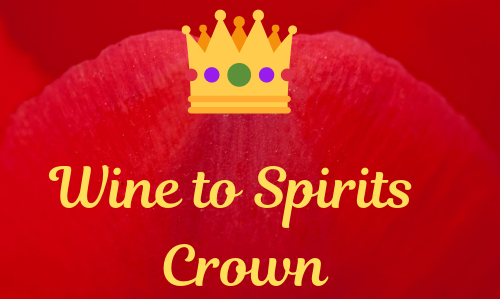BEST VIOGNIER WINES
Viognier is a white-wine grape variety known for producing textural, aromatic wines with pronounced fruit flavors as apricots are the variety’s classic flavor associations. On the nose, Viognier wines can also be very herbal, with aromas of chamomile, lavender, thyme and even a possible hint of pine. In aged examples and sweeter styles, this potentially overpowering herbal profile is softened by honeyed notes. Just consider a fantastic grilled salmon and a mango and not a salad with a glass of Viognier.
Like Chardonnay, Viognier has the potential to produce full-bodied wines with a lush, character. In contrast to Chardonnay, Viognier varietal has more natural aromatics that include notes of peaches, pears, violets.
The potential quality of Viognier is also highly dependent on viticultural practices and climate with the grape requiring a long, warm growing season in order to fully ripen but not a climate that is so hot that the grape develops high levels of sugars and potential alcohol before its aromatic notes can develop. The grape is naturally a low yielding variety which can make it less economically viable to planting in some vineyards.
The Best Viognier Wines are well-known for their floral aromas, and terpenes, which are also found in Muscat and Riesling wines. There are also many other powerful flower and fruit aromas which can be perceived in these wines depending on where they were grown, the weather conditions and how old the vines were. Although some of these wines, especially those from old vines and the late-harvest wines, are suitable for aging, most are intended to be consumed young. Viogniers more than three years old tend to lose many of the floral aromas that make this wine unique. Aging these wines will often yield a very crisp drinking wine which is almost completely flat in the nose. It is thus better to select a young wine for the ultimate in flavor The color and the aroma of the wine suggest a sweet wine but Viognier wines are predominantly dry, although sweet late-harvest dessert wines have been made.
ALMOST EXTINCT
In the late 1960s, just 35 acres of Viognier vines were all that remained in the world, located exclusively in the vineyards of Condrieu and Château-Grillet. Fortunately, the 1970s saw new life into the near-extinct variety, by the Yalumba winery in Australia’s Eden Valley and a handful of California winegrowers. During the 21st Century, Viognier has had a remarkable renaissance and is now found more widely in France, and in Italy, Spain, Switzerland, the US, Chile, Argentina, South Africa, Australia, New Zealand, and even Japan. In other locations, notably California and Australia, Viognier has emerged as a prestigious niche variety.
OUTLAW CONTRABAND
The origin of the Viognier grape is unknown; it is presumed to be an ancient grape, possibly originating in Dalmatia which is present-day Croatia and then brought to Rhône by the Romans. One legend states that the Roman emperor Probus brought the vine to the region in 281 AD; another has the grape packaged with Syrah on a cargo ship navigating the Rhône river, en route to Beaujolais when it was captured, near the site of present-day Condrieu, by a local group of outlaws. The origin of the name Viognier is also obscure. The most common namesake is the French city of Vienne, which was a major Roman outpost.
Viognier Wine & Food Pairings
The best selections could be mild creamy curries like kormas or spicy south-east Asian curries. Even curries made with curry powder work well as do spicy dishes with a hint of peach or apricot, echoing the flavors in the wine
Mild spicy noodle dishes like Pad Thai
Chicken salads with apricot, peach or mango
Fruity chicken – and even lamb – tagines with apricot
Dishes with ginger, saffron and coconut
Chicken, pork or rabbit with creamy sauces, especially if the dish includes a dash of viognier. More intensely flavored viogniers can stand up to roast pork, chicken, and turkey
Rich shellfish dishes such as seared scallops, grilled lobster and baked crab, especially with a hint of spice
Creamy and buttery cheeses
Sweet root vegetables especially carrots, parsnips and sweet potatoes and spicy butternut squash
Salmon
Mahimahi
Chilean Sea Bass
Lobster
Crab Cakes
Pork
Turkey
Ham
Almonds
Creamy or buttery Pasta Dishes
Please sign up for our email list below to get the latest information on our latest product descriptions, upcoming sales and special offers. We have some of the best offers in the business so please keep updated and have all questions answered in our COMMONWEALTH NEWS
With all these great food ideas it is time to order and sample some great Viognier Wine. Please check out the selections below or go to our website for the ultimate source of all wine and spirits
Alban Central Coast Viognier 2017
Viognier from Central Coast, California
Barboursville Reserve Viognier 2017
Viognier from Virginia, Other U.S.
Cristom Viognier 2016
Viognier from Eola-Amity Hills, Willamette Valley, Oregon
Penner-Ash Viognier 2018
Viognier from Oregon
Darioush Signature Viognier 2018
Viognier from Napa Valley, California
Miner Family Viognier 2017
Viognier from California
M. Chapoutier La Combe Pilate 2016
Viognier from Rhone, France
Yalumba Organic Viognier 2017
Viognier from South Australia, Australia
Guigal Condrieu 2017
Viognier from Condrieu, Rhone, France
Domaine Pichat Condrieu La Caille 2017
Viognier from Condrieu, Rhone, France
Peay Vineyards Estate Viognier 2017
Viognier from Sonoma Coast, Sonoma County, California
Chateau Lagrezette Le Pigeonnier White 2015
Viognier from France





